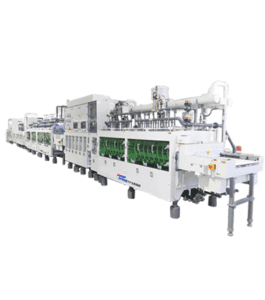Chemical Etching Features
About Dragon Etching
Dragon Etching specializes in manufacturing equipment for PCB chemical processing and metal chemical processing. Their main products include chemical etching machines, chemical cleaning machines, photochemical development machines, high-precision exposure machines, and more. These devices play crucial roles in the PCB manufacturing and metal processing industries, aiding customers in achieving high precision and efficiency in their machining processes.
Dragon Etching’s products are highly customizable, designed and manufactured according to the specific needs and processing requirements of their clients. They are committed to providing high-quality, high-efficiency chemical processing equipment to meet the demands of customers in the PCB manufacturing and metal processing industries. The equipment used in the production of high-precision metals and the details of how each piece of equipment works in the production of high-precision metals. Click to learn more.
 |
Total price of process machine: Starting from $5000/m |
Chemical Etching Machine Equipment Parameters
|
birthplace
|
China
|
|
|
Guangdong
|
|
brand
|
Dragon Etching
|
|
core inter-layers
|
2 mil(where 1 mil is equal to 0.001 inches.)
|
|
PCB construction where
|
250 mil
|
|
working width
|
500/600/700/800MM customized
|
|
high
|
900-1100mm customized
|
|
Thin Material Transport for PCB
|
1m-100m depends on output
|
|
Voltage
|
380V/415V/440V customized
|
|
Material
|
Polypropylene 12/15/ 20MM
|
|
Specificities
|
Flexible reel-to-reel Kapton,Rigid FR4,1~100m,2 mil material can be transported no problem(OEM)
|
|
heating type
|
SST316 titanium heater
|
|
Modular metal
|
SST316 titanium material
|
|
apply to
|
high precision etching (Wet Processing for PCB)
|
|
Common Processes
|
|
|
Common Chemicals Etchant
|
|
|
After Warranty Service
|
Video technical support, online support, spare parts
|
Popular Wet Processing Combination Equipment
(DES) Develop – Etching – Stripping
DES etching machine This production line is designed for the process of Develop, Etching, and Stripping, commonly known as DES. In this system, the Develop stage involves the application of a chemical solution to reveal the desired pattern on a substrate. Following that, the Etching stage utilizes a chemical process to selectively remove material from the substrate, shaping it according to the revealed pattern. Finally, in the Stripping stage, any remaining unwanted material is removed, leaving behind the final product. This integrated sequence ensures precise and controlled manufacturing of components or devices.
 |
Chemical DES etching machineTotal price of process machine: Starting from $4300/m
|
mical DES noun explanation
- (D) Developing
- In photofabrication, developing is the post-exposure process. Dissolve and remove the photoresist other than those required and form a pattern image of the photoresist. There is a “soaking method” of immersion in the developer and a “spray method” of spraying, and there is a common use of spray methods in terms of supply efficiency of the developer. Immediately after the development, a set of heating treatments called post-baking are carried out. The post-baking box hardens the photoresist, which results in resistance to etching fluid in the next process and improves adherence to substrates.
- (E) Etching
- Etchingis a post-developing process. While continuously transporting using etchants suitable for metal materials (products), a large amount of etching is performed uniformly by the spray method. As the management of the etchant is important, an etchant autoanalyzer is installed as a supplementary facility, and various chemicals are automatically supplied based on the feedback of each component analysis to maintain a constant etching rate.
- (S) Stripping
- Stripping is the post-etching process. After etching, dissolve the unnecessary photoresist film. Depending on the type of photo registry, sodium hydroxide heated around 40 to 80℃ or 100℃ is commonly used. In the case of special resist, mixed solvents such as xylene, alcohols, and ketones may be used. If the product cannot be stripped by immersion, physical force such as a brush or spray is applied to the product. Immediately after stripping, De-ionized water cleaning, drying, and rust prevention are performed as a set.
Features that can be added to Chemicaletching machine:
- Acid Controller – Popular for cupric chloride etchant
- Drying – Ensures products come out of the line dry.
- Inline Filtration – Results in fewer clogged nozzles and particles in solution.
- Ion Exchange – Saves water in rinse stations.
- pH Controller – Popular option for Alkaline etching. Standard on developing and resisting stripping lines.
- Ventilation Demister – Aids in condensation and recovery of evaporated process chemistry.
- Thin Material Transport – Transport very thin and flexible materials without the use of leaders.
- Drip Pan – Catches chemistry drops or spills
- Chiller Cooling System – Increased cooling capabilities.
- ORP Controller – Popular option for Cupric and Ferric etchers. Comes with a regeneration system.
- Specific Gravity Controller (IX) with Visual Baume – Prevents etchant Baume from getting too low or high.
- Recipe-Driven Operation – Eliminates product variation due to improper machine set-up.
- Data Collection and Archiving – Gives real-time and historical feedback analysis.
